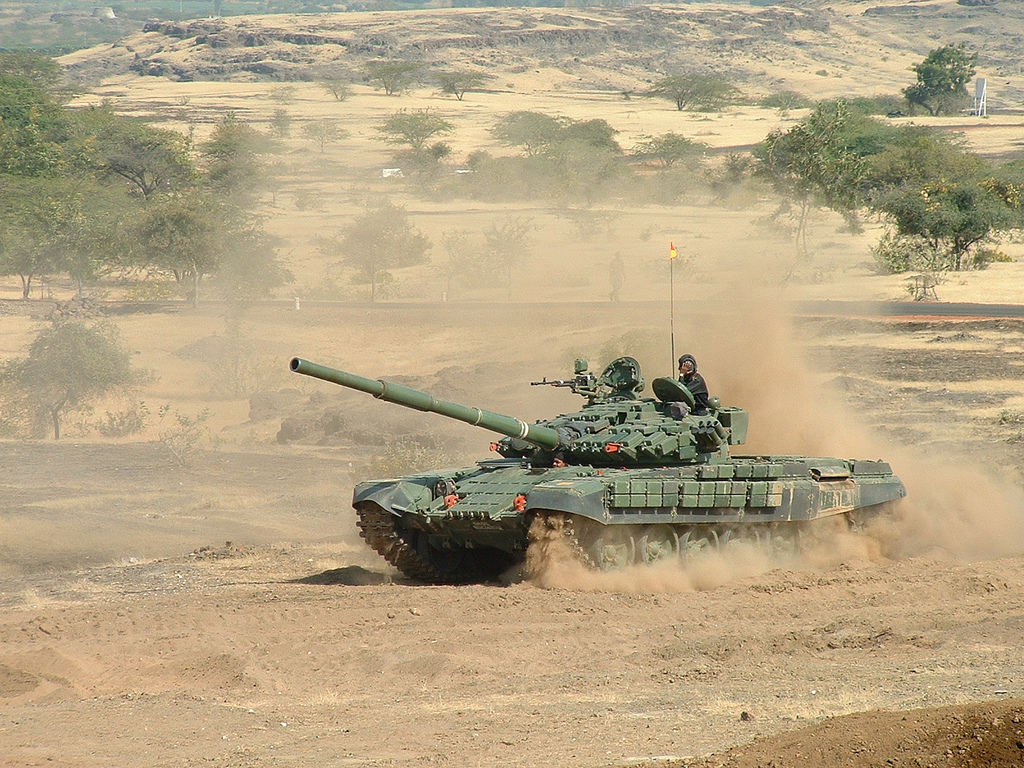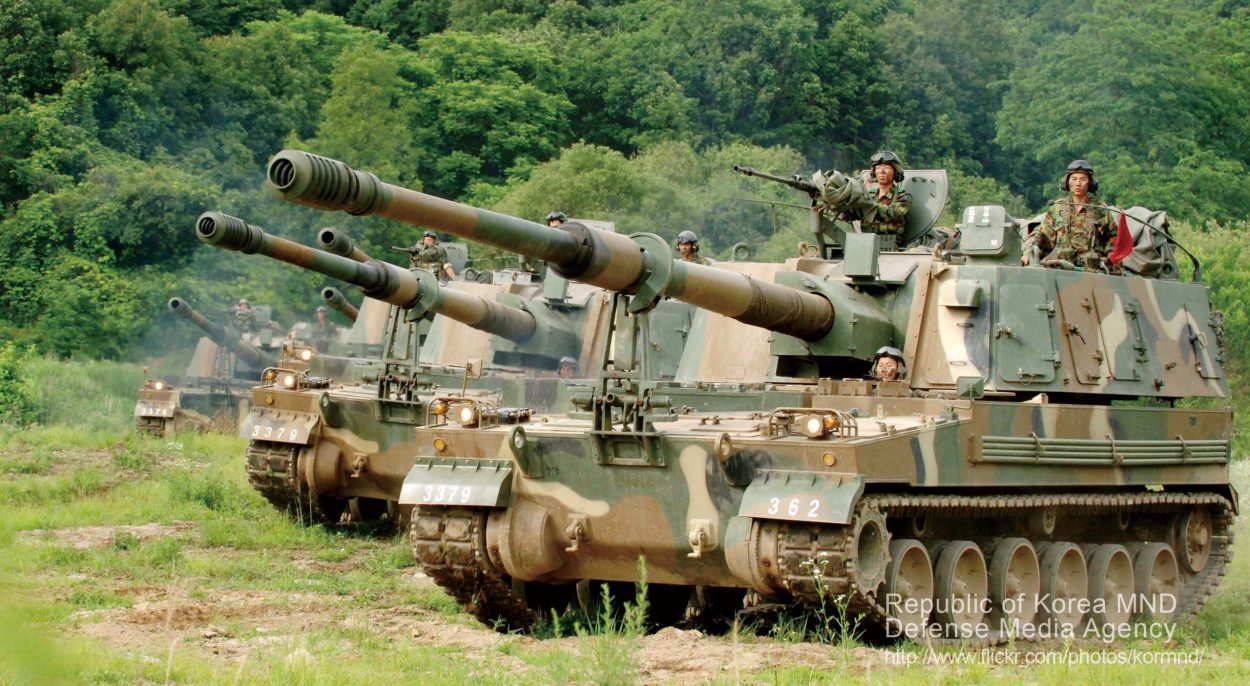The Indian Army is reportedly accelerating the modernization of its armed forces to deal with the “increasing threat” from China along India’s northern frontiers, which is “expected to persist in the near future.”
According to the latest media reports, the Indian Army is initiating Project Zorawar (roughly translating to powerful), which involves the induction of indigenous light tanks to enable quicker deployment and movement in high-altitude areas.
The Indian Army felt a pressing need to have light tanks in service to oust its rival, China, in a bid to secure operational dominance in High Altitude Areas (HAA). Following the border conflict with China in the summer of 2020, the requirement for the light tanks in service was prominently emphasized.
In the absence of light tanks, the Indian Army had to use larger tanks like the T-72 and the T-90. Both the T-90 and the T-72 weigh roughly 46 tons. Another Indian tank, Arjun Mk 1A, which weighs 68.5 tons, is the newest of the Army’s three distinct tank models.

These tanks aren’t designed for high-altitude environments. Instead, they are effective when used in plains and deserts. On the other hand, China is believed to have many highly advanced, state-of-the-art tanks used in combat as a combination of medium and light tanks with high power-to-weight ratios.
The EurAsian Times had earlier reported that Beijing had stationed the latest ZTL-11 wheeled armored personnel carriers, the CSK series of assault vehicles, and the third-generation modern light tank ZTQ 15 (Type 15) along the LAC in Eastern Ladakh in the last two years.
While Indian armored battalions struggled to carry their hefty T-72s across mountain passes as high as 17,500 feet, China’s ZTQ-15 small tanks sped through with ease.
Maj Gen Harsha Kakar (Retd) spoke to EurAsian Times and emphasized the need for lightweight tanks for the Indian military. “Considering the terrain, lightweight tanks are best suited. Strategically it will enhance defensive and offensive options. A clear signal to the Chinese; we mean business and are no pushovers,” he said.
The operational challenges of utilizing big main battle tanks (MBTs) in mountain warfare have pushed India’s light tank program forward.
In 2021, the Indian Army released a Request for Information (RFI) to procure 350 Light Tanks weighing less than 25 tons. These tanks will be used in High Altitude Areas (HAA) to confront Chinese armored columns stationed along the LAC.
In March 2022, The Indian government had given preliminary approval for the domestic design and development of light tanks for mountain combat.
The latest media reports stated that the Army has completed the general staff quality requirements and will submit an Acceptance of Necessity (AON) to the defense ministry in September, which will initiate the project.
What Does The Indian Army Seek?
According to the report, the Army is considering developing a light tank with a maximum weight limit of 25 tons and the same amount of firepower as its standard tanks.
The military also wants it to be equipped with loitering munition, artificial intelligence (AI), tactical surveillance drone integration to provide a high level of situational awareness, and an active protection system.
The active protection system protects the tank from anti-tank-guided missiles and munitions. The project has been titled ‘Zorawar’ after Zorawar Singh Kahluria, a military general who served as the ‘conqueror of Ladakh’ under Jammu’s Raja Gulab Singh.

Meanwhile, the defense sources also explained that the projected conversion of the Vajra-tracked self-propelled artillery into a light tank had been canceled because it would not match the Army’s weight criteria.
The report said that the 25-ton weight limit is the highest that can be transported in high-altitude zones. Also, sources revealed that the disruption in the global supply chain for defense-related components caused by the continuing Russia-Ukraine conflict had hampered the manufacturing and maintenance of India’s imported fleet of tanks.
Therefore, India must design and develop a light tank domestically for the Indian Army.
What Choices Does India Have?
The Russian Sprut tank was previously thought to be a key candidate for the Indian Army’s need for a lightweight tank. However, the latest report claimed that India would not purchase Russian Sprut light tanks but instead seek something with similar capabilities.
This action effectively ended the possibility of India receiving the Sprut tanks that Russia had proposed to India during Defense Minister Rajnath Singh’s visit to Moscow in 2020.
Kakar feels India will take time to build its lightweight tank. He continued, “It is not likely to be regular order, possibly one time with sufficient reserves. Unlikely we will get a manufacturer to set up and produce in India. It could be a joint venture like the K9 artillery SP gun or a one-time purchase.”
An Indian Defense company, Larsen & Toubro (L&T), and a South Korean defense corporation Hanwha Defense are collaborating to develop light tanks for the Indian Army.
The two businesses previously worked together to develop the K9 Vajra-T self-propelled howitzer (SPH), a K9 Thunder variant, for the Indian Army. As previously reported by the EurAsian Times, an L&T official stated in February 2022 that the business intends to collaborate on constructing light tanks with Hanwha Defense.
Hanwha Defense is reportedly offering the Indian Army its K21-105 light tank. It has a 105 mm turret with a 10-degree depression angle and a nearly 42-degree elevation angle, which helps fire at targets on higher slopes.

The K21-105 is based on the K21 infantry fighting vehicle and has a 105mm rifled gun turret with a maximum direct fire range of four kilometers. It can fire both standard NATO and newly developed smart ammunition.
The vehicle, which has increased maneuverability and a weight of about 25 tons, is cheaper to build. The K21-105 is an amphibious armored vehicle. This improves battle effectiveness by enabling armored columns to cover natural barriers like rivers or lakes.
The DRDO has also previously stated that it will provide two alternatives involving the K-9 Vajra hull. However, the latest report has ruled out the prospect of creating a light vehicle utilizing the Vajra-tracked self-propelled artillery.
BAE Systems Hägglunds has also previously announced that it believes it can provide a single baseline platform capable of meeting the Indian Army’s diverse needs. However, the business has not specified whether it will collaborate with any local private company to develop a lightweight tank in India.
According to Darren Restarick, region sales director for BAE Systems Hägglunds, the CV90 family of armored combat vehicles (AFVs) can fulfill the Indian Army’s light tank, Futuristic Infantry Combat Vehicle (FICV), and Future Ready Combat Vehicle (FRCV) criteria.
Restarick explained that by employing the same platform for three requirements, with the ability to add or subtract armor and alter turrets, attrition capabilities would be increased. The operator can “regenerate the product” based on the current demands.
The BAE CV-90 family’s light tank, the CV90120-T, features a Hägglunds turret mounted on a CV90 chassis from the current generation. It has a fully stabilized 120mm high-pressure smoothbore cannon called the CTG 120/L50 that can fire up to 14 rounds per minute.
The battlefield management system for the tank is fully integrated, has open electronic architecture, is scalable, and is constructed on a video network with displays at each crew station.
The tank’s defensive assistance suite (DAS) consists of a top attack radar, laser, radar, and missile approach warning systems and an MSA (multispectral aerosols) active countermeasure system that can recognize intelligent indirect munitions. Its survivability is also increased by the radar-absorbing track skirts and stealth turret design.
- Contact the author at ashishmichel@gmail.com
- Follow EurAsian Times on Google News




